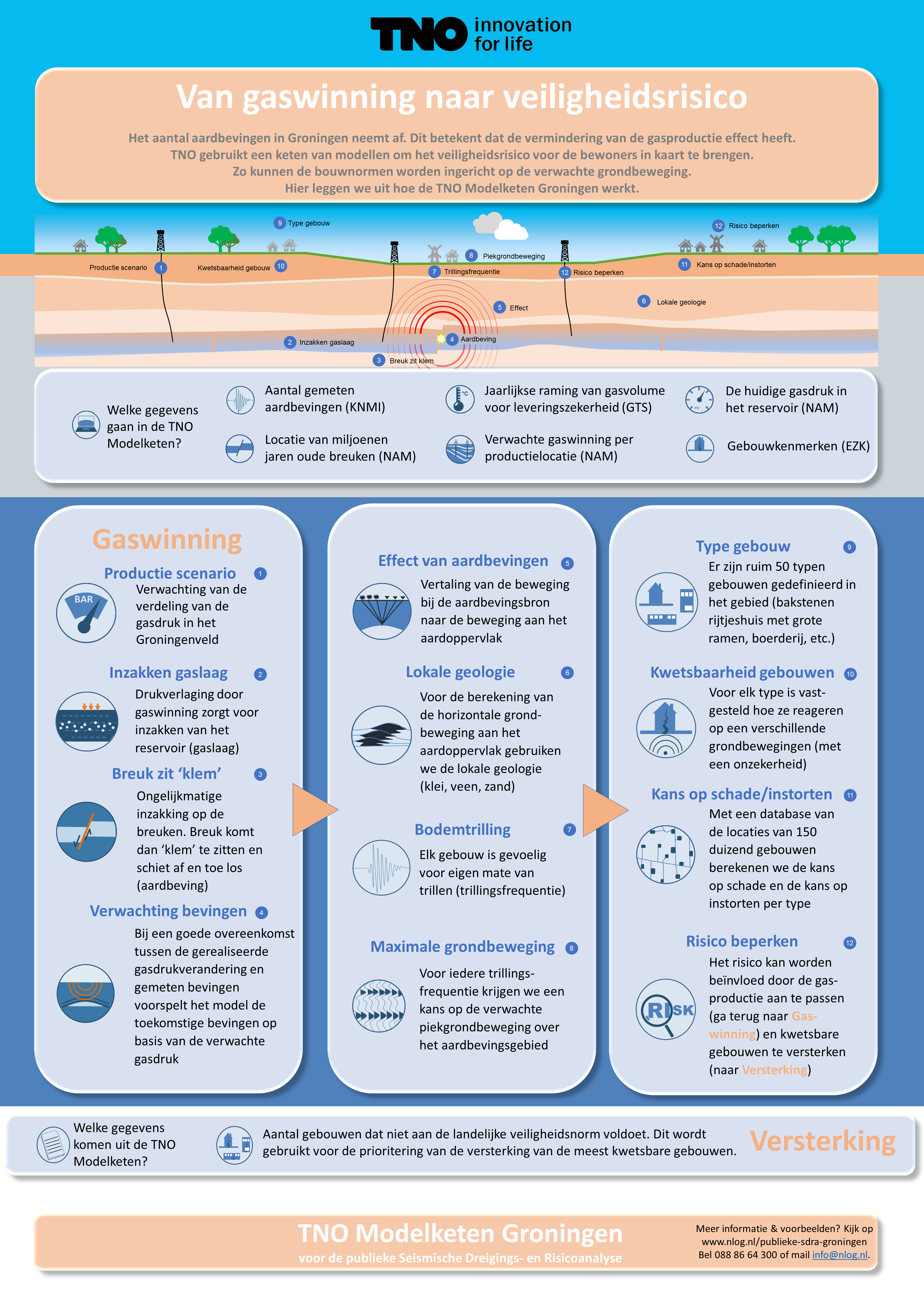A Seismic Hazard and Risk Analysis (SHRA) provides an expectation of the future seismic ground motions and the resulting safety risk for residents in the Groningen earthquake area as a result of gas extraction from the Groningen gas field. The SHRA is an important part of the operational strategy that is determined for each gas year by the Ministry of Economic Affairs and Climate (EZK). Up to and including 2020, NAM has carried out the SHRA for Groningen under the title HRA. The HRA 2020 was the last version. From 2021, the SHRA will come in the public domain. TNO has been commissioned by EZK to implement the public SHRA Groningen.
The Model Chain Groningen is a software tool. To carry out the public SHRA Groningen, TNO has implemented the Model Chain Groningen independently of NAM for application in the public domain. This enables the calculation of the possible consequences of gas extraction for various production scenarios. Both the hazard and risk analysis use statistical methods that take into account the uncertainties related to limited knowledge and imperfections in both measurement data and models.
The Modelchain Groningen is schematically described in the infographic below:
Reference documentation for the TNO Model Chain Groningen and public SHRA Groningen
- Comparative analysis of the NAM and TNO implementation in the Groningen Seismic Hazard and Risk Assessment (TNO report, TNO 2019 R11997, 19 december 2019)
- Probabilistic Seismic Hazard and Risk Analysis in the TNO Model Chain Groningen (TNO report, TNO 2020 R11052_3, 28 april 2022)
- IT-platform for the TNO Groningen Model Chain PSHRA calculations (TNO report, TNO2020 R10474, 1 juli 2020)
- TNO Model Chain Groningen: Update and quick scan comparison of 2020 HRA model (TNO rapport, TNO2020 R11659, 6 november 2020)

